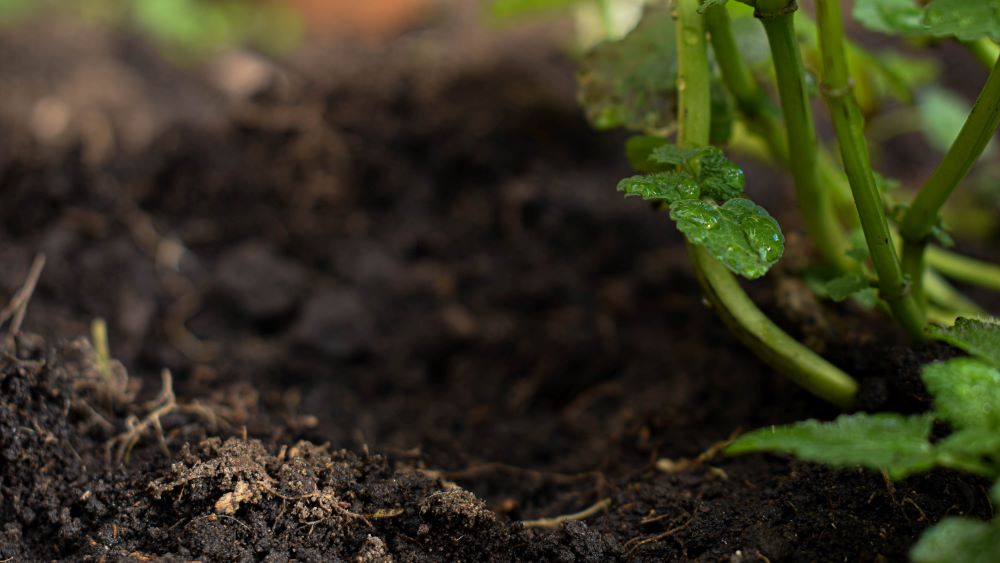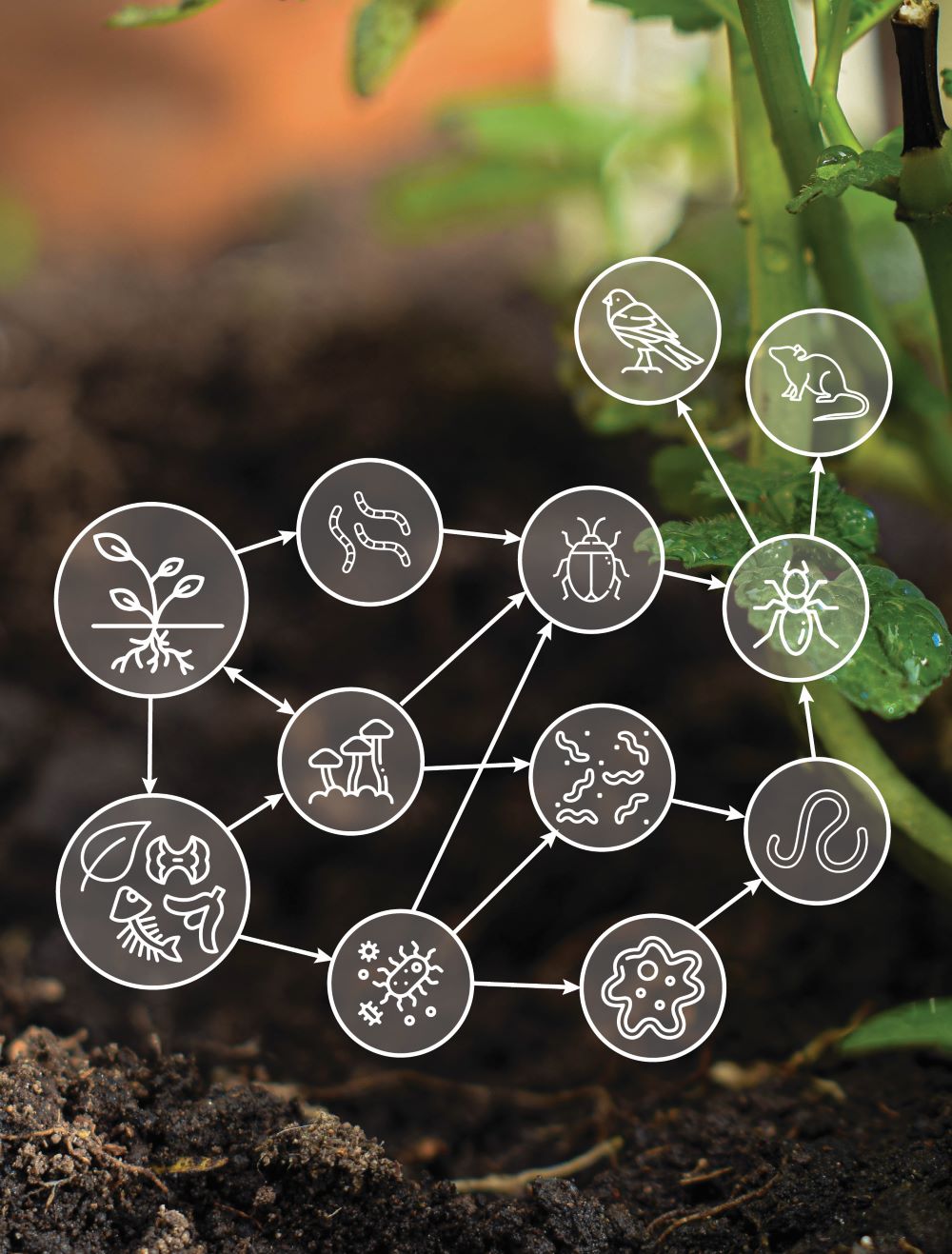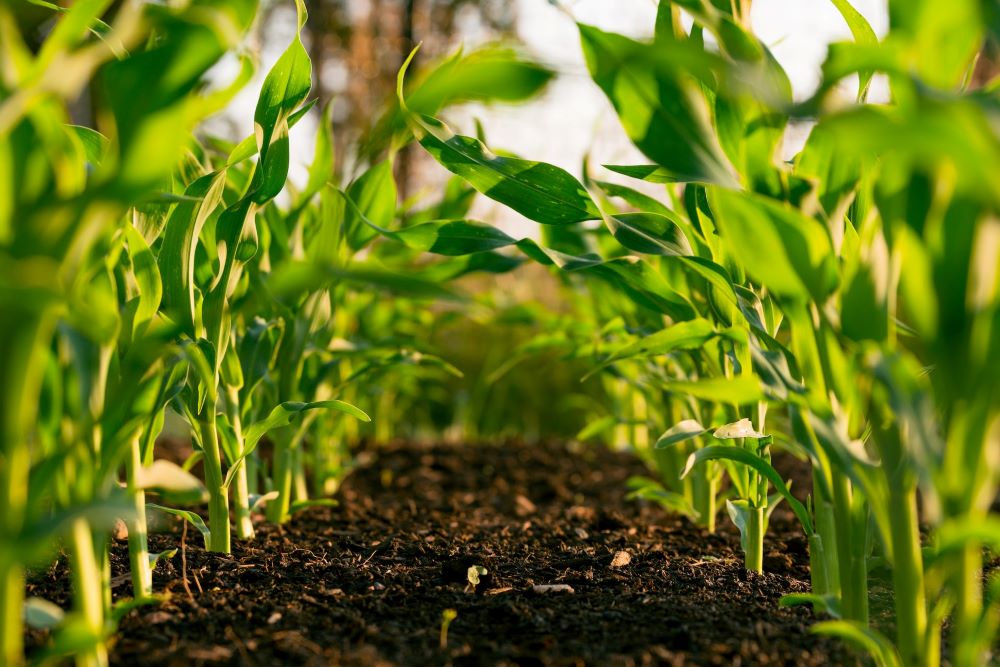Recent Posts
- Home
- Elevate Blog
- The Soil Food Web
The Soil Food Web
Posted on

Soil is a complex community of living organisms. Plants, animals, bacteria, and fungi work together to create healthy soil that supports plants, and plants in turn support the environment by providing oxygen and food.
Just as humans have a gut biome responsible for digesting food, the soil has a biome which breaks down organic matter and releases nutrients.
What is the Soil Food Web?
A thriving soil food web contains a rich diversity of organisms, including bacteria, fungi, protozoa, nematodes, beetles, earthworms, and more. Each of these organisms plays a unique role in breaking down organic matter, cycling nutrients, and creating soil structure.

Bacteria and fungi feed on organic matter, breaking it down into simpler compounds and capturing the nutrients. Protozoa, nematodes, and other organisms, consume bacteria and fungi and release the nutrients in plant available forms.
Members of the food soil web also improve soil structure by creating channels that allow air and water to circulate. Dead plant and animal material is returned to the cycle to be broken down by bacteria and fungi.
What Makes a Healthy Soil Food Web?
A complex and diverse food web is a healthy one - all of the organisms in the soil food web work together to create healthy soil. The right balance of fungi to bacteria, and predators to prey, is key to creating the optimal pH, structure, and nutrient cycling rates needed for healthy plant growth.
A healthy soil food web helps hold nutrients in the soil until the plant needs them, and then converts them into forms that the plant can readily absorb. By nurturing a healthy soil food web, we can maximize nutrient uptake, while reducing the need for artificial fertilizers.
A healthy soil food web has several functions:
- It helps retain nutrients in the soil, reducing the need for fertilizers and preventing leaching or loss of nutrients.
- It cycles nutrients into the right forms and at the right rates for plants to absorb.
- It builds soil structure, enabling plants to develop strong root systems and reducing water use.
- It suppresses disease-causing organisms by promoting beneficial microorganisms.
- It protects plant surfaces from infections by ensuring the presence of beneficial microorganisms.
- It produces growth-promoting hormones and chemicals that help plants thrive.
- It controls toxic compounds by breaking them down naturally.
These functions each work together to increase plant growth, reduce reliance on synthetic fertilizers, and create a balanced ecosystem.
The same components that are part of the soil food web are involved in the composting process.

How Does Composting Support the Soil Food Web?
Food is only as healthy as the soil that it was grown in. Soil that is unhealthy, compacted, or lacking in nutrients can lead to stunted growth, reduced yield, and an increased susceptibility to pests and disease.
The application of compost restores degraded soil. It reduces soil erosion, conserves water, replenishes lost nutrients, promotes healthier plant growth, and helps combat climate change. Compost is a rich source of both nutrients and beneficial microbes. Bacteria and fungi that release nutrients from soil use organic matter as their food or source of energy, compost provides a source of both microorganisms and their fuel.
Read More: The Power of Soil Regeneration
You’re not only adding nutrients for plants, the addition of compost supports the entire soil food web! Compost enables soil to support flourishing plants, trees, and crops. We want to make composting mainstream!
Find More Composting Information and Resources
Let's Celebrate Compost!
 Loading... Please wait...
Loading... Please wait...



